The Intel Broadwell Xeon E3 v4 Review: 95W, 65W and 35W with eDRAM
by Ian Cutress on August 26, 2015 9:00 AM ESTOffice Performance
Dolphin Benchmark: link
Many emulators are often bound by single thread CPU performance, and general reports tended to suggest that Haswell provided a significant boost to emulator performance. This benchmark runs a Wii program that raytraces a complex 3D scene inside the Dolphin Wii emulator. Performance on this benchmark is a good proxy of the speed of Dolphin CPU emulation, which is an intensive single core task using most aspects of a CPU. Results are given in minutes, where the Wii itself scores 17.53 minutes.

Dolphin prefers single threaded speed and IPC, which the extra frequency of the v3 wins out here. The disparity between the 65W/95W v4 processors and the 35W processor is most obvious here.
WinRAR 5.0.1: link
Our WinRAR test from 2013 is updated to the latest version of WinRAR at the start of 2014. We compress a set of 2867 files across 320 folders totaling 1.52 GB in size – 95% of these files are small typical website files, and the rest (90% of the size) are small 30 second 720p videos.
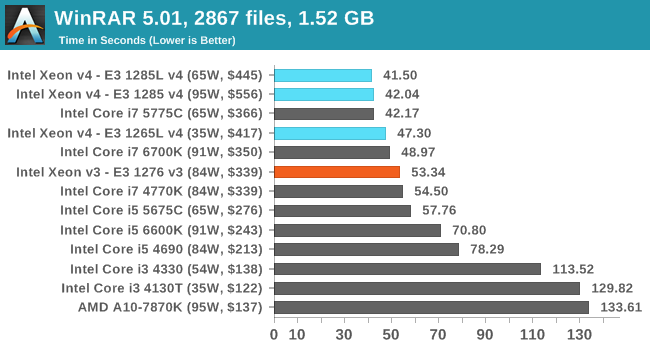
WinRAR is our classic 'eDRAM works here!' benchmark, clearly showing how Broadwell benefits. Although, one might argue that WinRAR is not a typical workload environment. It is also poignant to show that the 95W v4 doesn't win here in this variable-threaded load.
3D Particle Movement
3DPM is a self-penned benchmark, taking basic 3D movement algorithms used in Brownian Motion simulations and testing them for speed. High floating point performance, MHz and IPC wins in the single thread version, whereas the multithread version has to handle the threads and loves more cores.
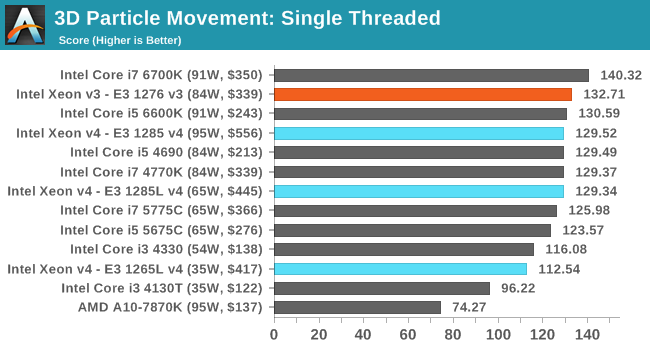

Similar to CineBench, in single threaded mode the v3 wins out due to the faster frequency, but in multithreaded mode the advancements in the Broadwell core due to better thread resource management puts at least the 95W v4 ahead.
FastStone Image Viewer 4.9
FastStone is the program I use to perform quick or bulk actions on images, such as resizing, adjusting for color and cropping. In our test we take a series of 170 images in various sizes and formats and convert them all into 640x480 .gif files, maintaining the aspect ratio. FastStone does not use multithreading for this test, and results are given in seconds.
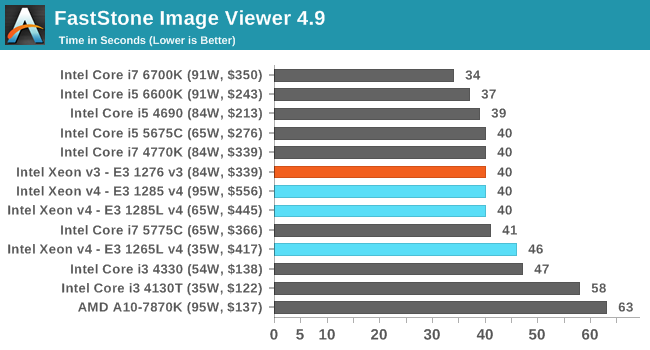
Web Benchmarks
On the lower end processors, general usability is a big factor of experience, especially as we move into the HTML5 era of web browsing. For our web benchmarks, we take four well known tests with Chrome 35 as a consistent browser.
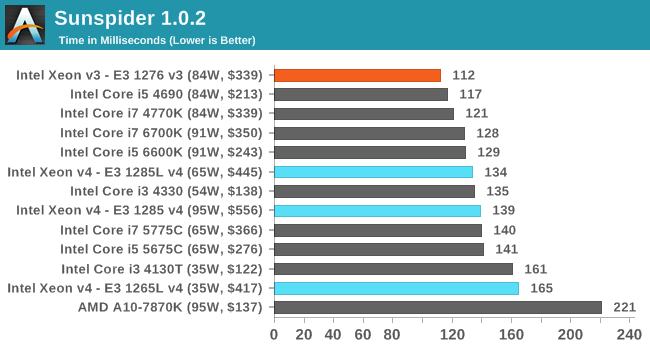
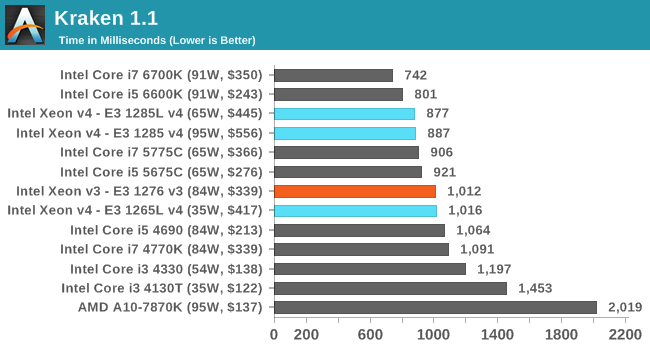
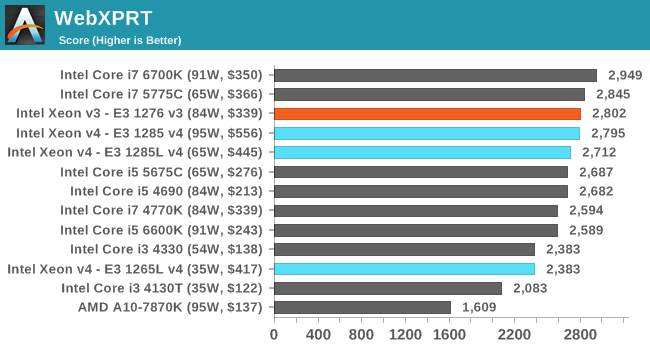
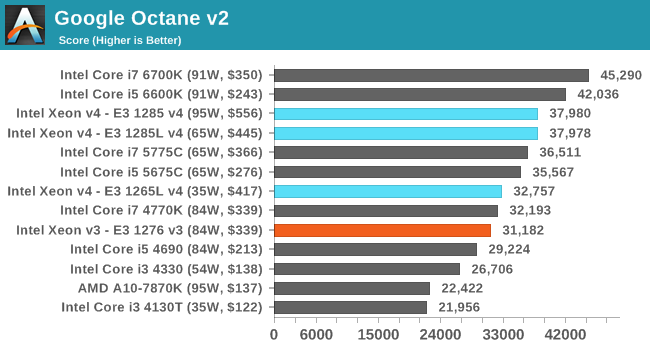
For web implementations, both Kraken and Octane see benefits moving up to Broadwell, but it is worth noting that moving to Skylake is an even better benefit. This again comes down to the management of CPU instructions between threads, and having benefits associated with keeping the knowledge of past instructions or information in lower cache levels. In would seem in this regard, if you count these benchmarks indicative of a real workload, that web-based throughput implementations are more in-flight operation limited than any other resource.










72 Comments
View All Comments
LemmingOverlord - Friday, August 28, 2015 - link
"All but one soldered part has the eDRAM disabled." - surely you mean the opposite? "All but one of the soldered parts are eDRAM-enabled."... otherwise you're saying they're all disabled, but one.lplatypus - Sunday, August 30, 2015 - link
Heads up that the first link in the article looks wrong: it points at file:///D:/Dropbox/AnandTech/CPUs%20-%20Intel/20150815%20Broadwell%20Xeon%20E3%20v4/anandtech.com/show/9320/intel-broadwell-review-i7-5775c-i5-5765c